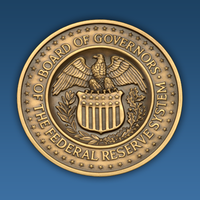The Consumer Conundrum: Fear and Spending in an Uncertain Economy
March 31, 2025, 3:55 am

Location: United States, Michigan, Ann Arbor
Employees: 10001+
Founded date: 1817
Total raised: $5.2M
The American consumer is caught in a storm. Inflation fears loom large, casting shadows over wallets and minds alike. Recent surveys reveal a sharp decline in consumer sentiment. The University of Michigan’s Survey of Consumers recorded a reading of 57.0 for March, a staggering drop of 11.9% from February and 28.2% from a year ago. This isn’t just a blip; it’s a warning siren.
Inflation is the villain in this narrative. Respondents expect inflation to run at 5% a year from now, a slight uptick from earlier readings. This is the highest expectation for five years since 1993. The fear is palpable. Consumers are bracing for impact, anticipating rising prices and potential job losses. The labor market is under scrutiny, with expectations of unemployment rising to levels not seen since 2009.
The economic landscape is rocky. The Commerce Department reported a core inflation rate increase to 2.8% in February, the largest monthly gain since January 2024. The connection between tariffs and inflation is becoming clearer. President Trump’s tariff plans are raising eyebrows, with economists warning they could stoke inflation further. This uncertainty has sent shockwaves through the stock market, with the Dow Jones Industrial Average plummeting over 500 points following the survey’s release.
Yet, amidst this chaos, consumers are still spending. It’s a paradox. Fear-driven shopping is on the rise. Behavioral scientists describe this phenomenon as “doom spending.” It’s a response to anxiety about future price hikes. One in five Americans is shopping out of fear, making impulsive purchases to beat inflation. It’s a strange form of retail therapy, a way to regain control in an unpredictable world.
The S&P 500 has seen a 10% drop from its recent highs, reflecting Wall Street’s unease. Consumer confidence has hit a 12-year low, according to the Conference Board. Despite these grim statistics, spending continues. It’s a curious dance of fear and consumption. Americans are trying to navigate a landscape filled with uncertainty. They are buying today, hoping to avoid higher prices tomorrow.
The reasons behind this behavior are complex. Humans are wired to resist uncertainty. When faced with volatility, they often act impulsively. The constant whiplash of tariff announcements and economic policy changes creates a sense of instability. This instability breeds anxiety, pushing consumers to spend now rather than later.
Major companies are feeling the pinch too. Retail giants like Walmart and airlines like Delta are signaling caution. They are bracing for a potential slowdown. The Federal Reserve is also on high alert, weighing its options in a tightening economic environment. The interplay between consumer sentiment and corporate strategy is critical. Companies must adapt to shifting consumer behavior while managing their own fears.
This cycle of fear and spending raises questions about the future. Will this doom spending continue? Or will consumers pull back as inflation bites harder? The answer lies in the broader economic context. If inflation continues to rise, consumers may find their purchasing power eroded. The delicate balance between spending and saving will be tested.
The implications are significant. A sustained decline in consumer sentiment could lead to reduced spending, which in turn could slow economic growth. It’s a vicious cycle. If consumers retreat, businesses may cut back on investment and hiring, further exacerbating the situation. The economy thrives on confidence. When that confidence wanes, the repercussions can be severe.
In this environment, policymakers face a daunting challenge. They must navigate the turbulent waters of inflation, consumer sentiment, and economic growth. The Federal Reserve’s decisions on interest rates will be crucial. If rates rise too quickly, it could stifle spending. If they remain too low, inflation could spiral out of control.
As consumers grapple with their fears, they are also seeking stability. They want assurance that their jobs are safe and that prices will stabilize. This desire for certainty will shape their spending habits in the months to come. The road ahead is uncertain, but one thing is clear: the consumer is at the heart of the economy. Their fears and spending patterns will dictate the trajectory of growth.
In conclusion, the American consumer is navigating a complex landscape of fear and spending. Inflation fears are driving behavior, leading to impulsive purchases. While spending remains steady, the underlying anxiety is palpable. The interplay between consumer sentiment and economic policy will be critical in shaping the future. As we move forward, understanding this dynamic will be essential for businesses, policymakers, and consumers alike. The consumer conundrum is far from over.
Inflation is the villain in this narrative. Respondents expect inflation to run at 5% a year from now, a slight uptick from earlier readings. This is the highest expectation for five years since 1993. The fear is palpable. Consumers are bracing for impact, anticipating rising prices and potential job losses. The labor market is under scrutiny, with expectations of unemployment rising to levels not seen since 2009.
The economic landscape is rocky. The Commerce Department reported a core inflation rate increase to 2.8% in February, the largest monthly gain since January 2024. The connection between tariffs and inflation is becoming clearer. President Trump’s tariff plans are raising eyebrows, with economists warning they could stoke inflation further. This uncertainty has sent shockwaves through the stock market, with the Dow Jones Industrial Average plummeting over 500 points following the survey’s release.
Yet, amidst this chaos, consumers are still spending. It’s a paradox. Fear-driven shopping is on the rise. Behavioral scientists describe this phenomenon as “doom spending.” It’s a response to anxiety about future price hikes. One in five Americans is shopping out of fear, making impulsive purchases to beat inflation. It’s a strange form of retail therapy, a way to regain control in an unpredictable world.
The S&P 500 has seen a 10% drop from its recent highs, reflecting Wall Street’s unease. Consumer confidence has hit a 12-year low, according to the Conference Board. Despite these grim statistics, spending continues. It’s a curious dance of fear and consumption. Americans are trying to navigate a landscape filled with uncertainty. They are buying today, hoping to avoid higher prices tomorrow.
The reasons behind this behavior are complex. Humans are wired to resist uncertainty. When faced with volatility, they often act impulsively. The constant whiplash of tariff announcements and economic policy changes creates a sense of instability. This instability breeds anxiety, pushing consumers to spend now rather than later.
Major companies are feeling the pinch too. Retail giants like Walmart and airlines like Delta are signaling caution. They are bracing for a potential slowdown. The Federal Reserve is also on high alert, weighing its options in a tightening economic environment. The interplay between consumer sentiment and corporate strategy is critical. Companies must adapt to shifting consumer behavior while managing their own fears.
This cycle of fear and spending raises questions about the future. Will this doom spending continue? Or will consumers pull back as inflation bites harder? The answer lies in the broader economic context. If inflation continues to rise, consumers may find their purchasing power eroded. The delicate balance between spending and saving will be tested.
The implications are significant. A sustained decline in consumer sentiment could lead to reduced spending, which in turn could slow economic growth. It’s a vicious cycle. If consumers retreat, businesses may cut back on investment and hiring, further exacerbating the situation. The economy thrives on confidence. When that confidence wanes, the repercussions can be severe.
In this environment, policymakers face a daunting challenge. They must navigate the turbulent waters of inflation, consumer sentiment, and economic growth. The Federal Reserve’s decisions on interest rates will be crucial. If rates rise too quickly, it could stifle spending. If they remain too low, inflation could spiral out of control.
As consumers grapple with their fears, they are also seeking stability. They want assurance that their jobs are safe and that prices will stabilize. This desire for certainty will shape their spending habits in the months to come. The road ahead is uncertain, but one thing is clear: the consumer is at the heart of the economy. Their fears and spending patterns will dictate the trajectory of growth.
In conclusion, the American consumer is navigating a complex landscape of fear and spending. Inflation fears are driving behavior, leading to impulsive purchases. While spending remains steady, the underlying anxiety is palpable. The interplay between consumer sentiment and economic policy will be critical in shaping the future. As we move forward, understanding this dynamic will be essential for businesses, policymakers, and consumers alike. The consumer conundrum is far from over.
